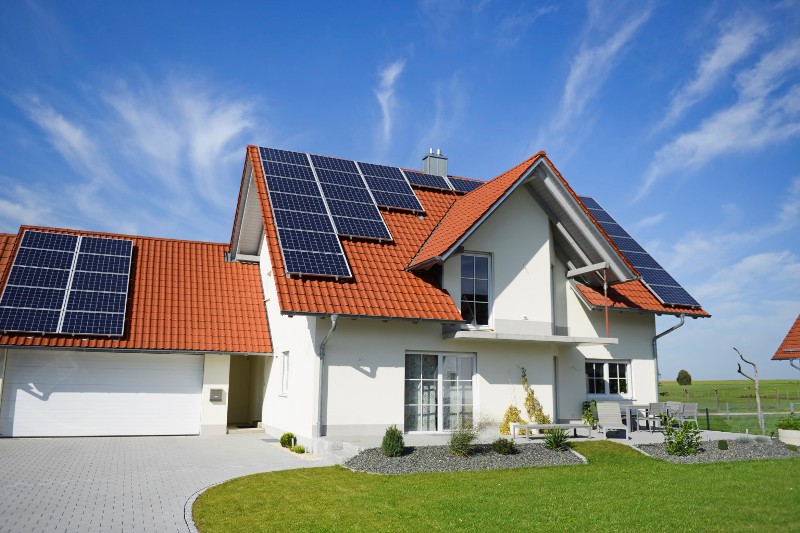Solar power is the best option for the environment, although wind turbines are a close second. Creating electricity from the sun can be done without creating any harmful emissions. Of course, there is a small impact when creating the solar panels but this is far less than any other current method of creating power.
However, solar power isn’t free. That means you need to weigh up the cost of buying and installing it versus the savings you’ll make and the difference you’ll make to the environment.
Understanding Solar Power

To create a solar-powered home you’ll need to purchase sufficient panels to generate the electricity your home uses. This means buying between 15 and 20 solar panels. That can be a significant outlay, especially if you buy panels from the big brands.
You’ll also need the racking for the solar panels to sit on. In most cases, this is aluminum and bolts to the roof of your home. You’ll probably need planning permission to add them to your home.
Alongside this, it’s necessary to have an inverter. This converts the DC power created by the panels into AC power that your home can use.
You’ll then need to choose between hooking up to the grid and selling excess electricity to them. This allows you to utilize grid power when you’re not producing electricity but you’ll need a qualified professional to make the connection.
The alternative is to use smart chargers and a row of deep-cycle batteries. These will be charged with your excess power and then supply your home with power when the panels aren’t producing any.
In both cases it’s a good idea to have a reliable expert in solar panel repairs, it can save you a significant amount of money.
The Cost

The exact cost will depend on how many panels you want to be fitted, which is dependent on the amount of power you use. Cost can also be affected by the brand of panels you choose and whether you want to connect to the grid or invest in batteries as a backup.
However, a good average guide is $15,000 for the installation. However, it is possible to get a grant for fitting solar panels. These can knock between $2,500 and $12,500 off your quote!
That can substantially reduce the cost and the time it will take for the panels to pay for themselves.
Again, this is dependent on the power generated. However, if you get the maximum grant the panels can pay for themselves in as little as five years. In the worst-case scenario, it can take as long as twenty.
Additional Thoughts
Before you decide that solar panels aren’t for you because you can’t wait twenty years to recoup your money, you should consider that having solar panels increases the value of your home. This is especially relevant if you are thinking of selling as you’ll not only increase the value, it will make your home more attractive to buyers.

